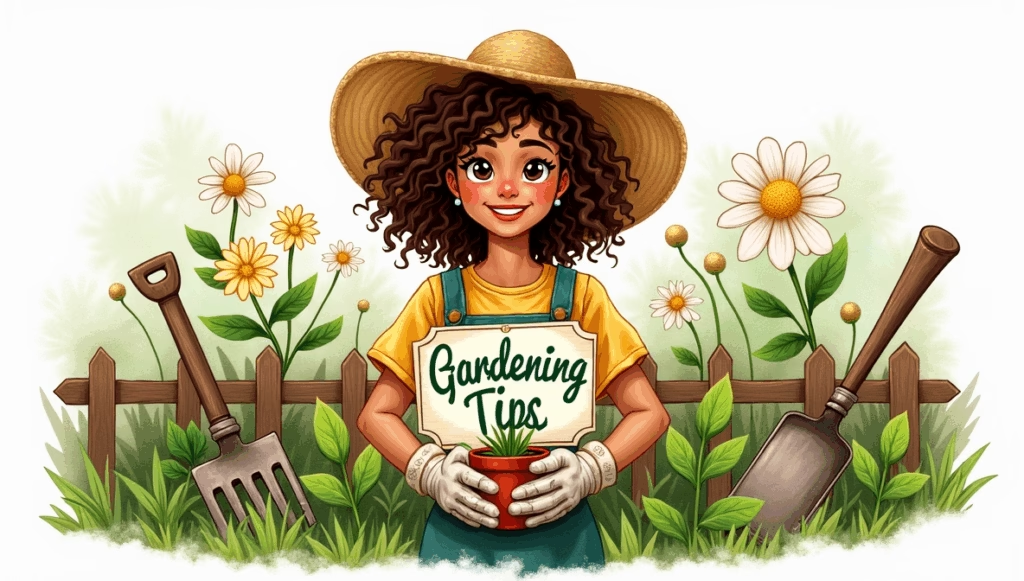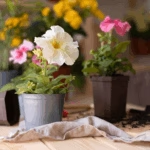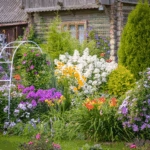Introduction
Gardening looks simple from the outside—put seeds in soil, add water, and watch them grow. But any professional gardener will tell you there’s an art and science to cultivating truly healthy, thriving plants.

The difference between a struggling garden and a lush, productive one often lies in the details: how you water, the soil you build, and the way you protect plants from pests.
In this guide, we’ll reveal 25 gardening secrets professionals swear by. These insider tips will help you transform your garden—whether it’s a small balcony collection of pots or a backyard full of vegetables—into a green paradise.
1. Start with the Soil
Soil health is the cornerstone of gardening. Professionals always test soil for nutrients and pH balance. According to the University of Minnesota Extension, balanced soil improves germination, nutrient absorption, and overall plant health.
2. Compost Like a Pro
Compost is often called “black gold.” It adds nutrients, improves structure, and boosts beneficial microbes. Learn more in our beginner-friendly organic farming methods guide.
3. Use Raised Beds for Productivity
Raised garden beds warm up earlier in spring, drain better, and prevent soil compaction. Professionals often recommend raised beds for high yields and better pest control.
4. Select the Right Seeds
Pro gardeners never compromise on seeds. Healthy plants start with healthy seeds. If you’re growing vegetables, explore best onion seeds for planting and other certified seed varieties for maximum results.
5. Follow the Sun
Plants need light to thrive. Most vegetables require 6–8 hours of direct sunlight daily. Observe your garden space throughout the day before planting.
6. Master Watering Techniques
Overwatering is one of the most common beginner mistakes. Experts water deeply and less often, encouraging roots to grow stronger. Morning watering is best to minimize evaporation.
7. Mulch to Lock in Moisture
Mulching with straw, bark, or shredded leaves helps suppress weeds, maintain soil moisture, and regulate temperature. As mulch breaks down, it feeds the soil naturally.
8. Rotate Crops Annually
Professional gardeners rotate crops every season to prevent soil nutrient depletion and reduce pests. For example, legumes fix nitrogen in soil, preparing it for leafy greens.
9. Choose Companion Plants
Companion planting is a natural pest control strategy. Basil repels pests from tomatoes, while marigolds protect against nematodes.
10. Fertilize Organically
Chemical fertilizers may offer quick results but harm long-term soil health. Professionals rely on organic fertilizers like compost tea, worm castings, and fish emulsion.
11. Use Drip Irrigation
Pro gardeners swear by drip irrigation systems for efficient watering. It delivers water directly to roots, saving time and reducing disease risk.
12. Space Plants Correctly
Overcrowding leads to competition for nutrients and poor airflow. Professionals follow spacing guidelines carefully to ensure healthier growth.
13. Prune for Health
Pruning isn’t just cosmetic—it improves airflow, prevents diseases, and encourages stronger growth. Deadheading flowers also promotes continuous blooming.
14. Watch for Pests Early
Pro gardeners inspect plants regularly. Early pest detection makes control easier. Natural solutions like neem oil or garlic spray are preferred over harsh chemicals.
15. Encourage Pollinators
No pollinators, no harvest. Plant flowers like lavender and sunflowers to attract bees and butterflies. Avoid pesticide sprays that harm beneficial insects.
16. Collect Rainwater
Rainwater is soft, chlorine-free, and perfect for plants. Many professionals set up rain barrels for sustainable irrigation.
17. Protect Plants from Weather Extremes
Shade cloths help in hot summers, while frost covers protect during winter nights. Professional gardeners adapt to weather changes quickly.
18. Grow in Succession
Instead of planting everything at once, stagger planting times. This ensures a steady supply of vegetables rather than one overwhelming harvest.
19. Use Trellises and Supports
Cucumbers, beans, and tomatoes grow better with supports. Trellising improves airflow, reduces disease, and saves space.
20. Add Beneficial Insects
Ladybugs, lacewings, and bees are a gardener’s allies. Professionals often purchase beneficial insects to naturally manage pests.
21. Keep a Gardening Journal
Experts track planting dates, fertilization, pest problems, and harvest yields. A journal helps refine strategies year after year.
22. Start Small, Scale Up
Even pros recommend starting small if you’re new. Focus on a few crops or plants and expand gradually as your confidence grows.
23. Explore Hydroponics
Urban professionals often turn to soil-free gardening. Our hydroponic farming guide explains how you can grow vegetables indoors with minimal space.
24. Be Patient
Plants grow at their own pace. Professionals understand that patience and consistency are as important as tools and fertilizers.
25. Enjoy the Process
Above all, professional gardeners garden for joy. Beyond harvests and flowers, gardening is about connecting with nature and creating something beautiful.
Conclusion
Gardening success doesn’t happen overnight. The secrets professionals swear by—healthy soil, organic inputs, smart watering, and consistent care—are the building blocks of a thriving garden.
By applying these 25 gardening tips, you’ll save time, reduce mistakes, and enjoy healthier, more vibrant plants.





